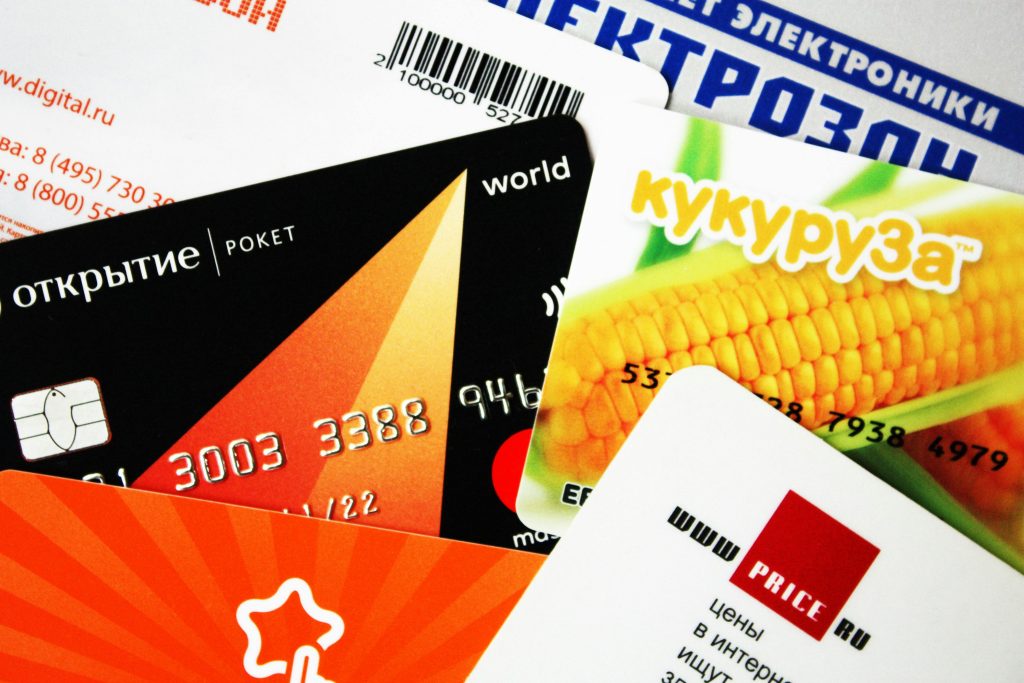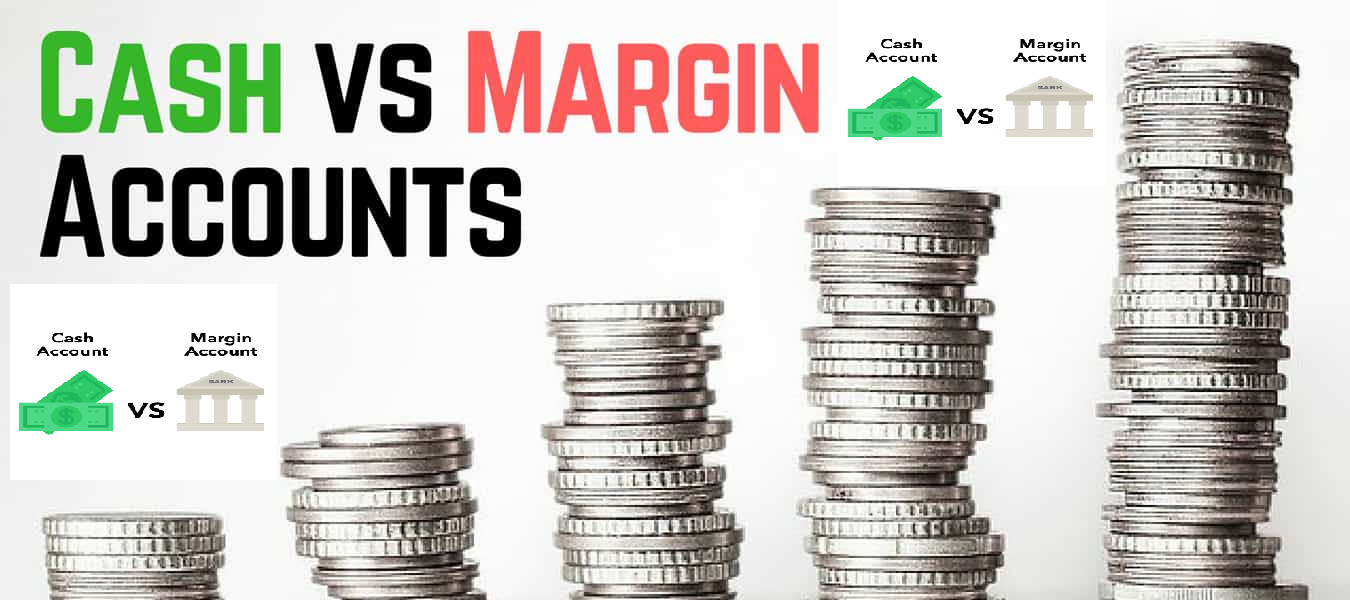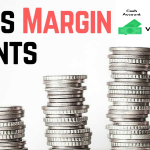When it comes to trading in the financial markets, understanding the differences between cash accounts and margin accounts is crucial for investors. These two account types offer distinct features and benefits, shaping how traders interact with the market and manage their investments. The cash account vs margin account comparison has an impact on trading strategies, risk levels, and potential returns.
This article aims to explore the essential aspects of cash and margin accounts. We’ll delve into the characteristics of each account type, highlight their key differences, and discuss the advantages and potential drawbacks of using them. By the end, you’ll have a clearer picture of which account might be more suitable for your trading goals and risk tolerance. This knowledge is vital to make informed decisions and navigate the complex world of financial trading more effectively.
Understanding Cash Accounts
Definition and Features
A cash account is a fundamental type of brokerage account that allows investors to buy and sell securities using only the funds they have deposited. This straightforward approach means that all transactions are fully funded by the investor’s own money. The key characteristic of a cash account is that you can only purchase securities up to the amount of cash available in the account. For example, if you have $5,000 in your cash account, you can only buy up to $5,000 worth of securities.
Cash accounts are governed by the Federal Reserve Board’s Regulation T, which oversees these accounts to ensure investors comply with regulations and have sufficient funds before purchasing securities. This regulation gives investors one business day to pay for security, known as T+1. This means that most securities have a settlement date that occurs on the trade date plus one business day.
It’s important to maintain sufficient settled funds to pay for purchases in full by the settlement date to avoid cash account restrictions. When you sell a security, the proceeds from the sale are not immediately available for new purchases. During this period, the funds are considered unsettled and can’t be used for purchases.
Cash accounts can hold various types of securities, including stocks, bonds, ETFs, mutual funds, REITs, money market funds, and in some cases, cryptocurrencies. However, most cash accounts don’t offer options contracts.
Advantages of Cash Accounts
Cash accounts offer several benefits to investors:
- Simplicity: Cash accounts are straightforward and beginner-friendly, making them suitable for all kinds of investors. There’s no need to worry about lending amounts or accruing interest.
- Buy-and-hold strategy: With a cash account, you can hold investments whether they rise or fall in value. This is particularly beneficial for long-term growth strategies.
- Limited risk: Since cash accounts only allow you to spend money that you already have, there’s less chance of incurring significant losses. You’ll know exactly what you are spending when an order is placed.
- Potential for additional gains: You may be able to earn interest on uninvested cash, also known as a cash sweep. The amount you earn depends on the brokerage your account is held at and the offered interest rate.
- No forced sales: Unlike margin accounts, where brokers may force the sale of assets if their value drops significantly, cash accounts allow you to hold onto your investments even during market downturns.
Limitations of Cash Accounts
While cash accounts have many advantages, they also have some limitations:
- Limited trading options: Cash accounts typically don’t allow for certain types of trades, such as short selling or buying on margin. This can limit the trading strategies available to investors.
- Potential for violations: Investors who actively trade must be careful not to violate certain regulations pertaining to cash accounts. There are three types of potential violations to avoid: good faith violations, freeriding, and cash liquidations.
- Settlement period restrictions: The settlement period can limit an investor’s ability to quickly reinvest funds from sold securities. This can be a disadvantage for more active traders who want to take advantage of market opportunities quickly.
- Limited potential returns: Your balance limits your potential returns. Without the ability to use leverage or margin, the upside potential is restricted to the amount of cash you have available to invest.
- Opportunity cost: Keeping large amounts of cash in the account for trading purposes means that money isn’t being invested in potentially higher-yielding securities.
Understanding these features, advantages, and limitations of cash accounts is crucial for investors to make informed decisions about which type of brokerage account best suits their investment goals and risk tolerance.
Exploring Margin Accounts

Definition and Features
A margin account is a type of brokerage account that allows investors to borrow money from their broker to purchase securities. This account serves as collateral for the loan, enabling investors to increase their purchasing power and potentially magnify their returns. With a margin account, you can buy more securities than you could with just the cash in your account.
To open a margin account, you typically need to deposit a minimum of $2,000, known as the minimum margin. Once the account is operational, you can borrow up to 50% of the purchase price of a stock. This initial deposit is called the initial margin.
Margin accounts are governed by regulations set by the Federal Reserve Board, the Financial Industry Regulatory Authority (FINRA), and the Securities and Exchange Commission (SEC). These regulations determine how much you can borrow and how much you must keep in your account.
Benefits of Margin Accounts
- Increased Purchasing Power: Margin accounts allow you to buy more securities than you could with just your available cash. This can potentially lead to higher returns if your investments perform well.
- Leverage: By using borrowed funds, you can amplify your potential gains. If the value of your investments rises, your profits can be magnified.
- Diversification: Margin accounts can help you diversify a concentrated portfolio. You can use your existing shares as collateral for a margin loan to invest in other securities without selling your original holdings.
- Flexible Line of Credit: Once your account has a margin agreement, you can take out a margin loan at any time without additional paperwork. This can be useful for unexpected expenses or investment opportunities.
- Potential Tax Benefits: The interest paid on margin loans may be tax-deductible, potentially offsetting some of your taxable income. However, it’s crucial to consult with a tax advisor for specific advice.
- Advanced Trading Strategies: Margin accounts allow for more sophisticated trading strategies, such as short selling and options trading.
Risks of Margin Accounts
- Magnified Losses: Just as margin can amplify gains, it can also magnify losses. If your investments decline in value, you could lose more than your initial investment.
- Margin Calls: If the value of your securities falls below a certain level, known as the maintenance margin, your broker may issue a margin call. This requires you to deposit more money or securities into your account or sell some of your holdings to increase your equity.
- Forced Liquidation: If you can’t meet a margin call, your broker has the right to sell your securities without notifying you to bring your account back to the required level.
- Interest Charges: Margin loans come with interest charges, which can eat into your investment returns. These charges accrue regardless of how well your investments are performing.
- Market Volatility Risk: Rapid market fluctuations can lead to unexpected margin calls or forced liquidations, potentially causing significant losses.
- Leverage Risk: While leverage can increase potential returns, it also increases the risk of larger losses. This can be especially dangerous during market downturns.
- Regulatory Changes: Margin requirements can change due to regulatory decisions, potentially affecting your investment strategy.
- Complexity: Margin trading is more complex than traditional cash account trading and requires a thorough understanding of the risks and regulations involved.
It’s crucial to understand that margin trading is not suitable for all investors. It’s generally recommended for more experienced traders who have a high risk tolerance and a solid understanding of market dynamics. Before engaging in margin trading, it’s essential to carefully consider your financial situation, investment goals, and risk tolerance. Always be prepared for potential losses and have a plan in place to manage your margin account effectively.
Key Differences Between Cash and Margin Accounts

Funding and Buying Power
The primary distinction between cash and margin accounts lies in their funding mechanisms and buying power. Cash accounts require investors to use only the funds available in their account for transactions. This means you can only purchase securities up to the amount of cash you have deposited. For instance, if you have USD 5000.00 in your cash account, you can only buy up to USD 5000.00 worth of securities.
In contrast, margin accounts allow investors to borrow money from their broker to purchase securities. This leverage essentially doubles your buying power. With a margin account, you could potentially buy up to USD 10000.00 worth of securities with just USD 5000.00 in your account. However, this increased buying power comes with the responsibility of repaying the borrowed funds and associated interest charges.
Trading Options
Cash accounts typically offer a more limited range of trading options compared to margin accounts. While cash accounts allow for basic transactions such as buying stocks, bonds, ETFs, and mutual funds, they often restrict more complex trading strategies.
Margin accounts, on the other hand, provide access to a broader spectrum of investment choices and advanced trading strategies. These include options trading, futures trading, and short selling. For instance, certain multi-leg options spread strategies, such as vertical spreads or iron condors, require a margin account. Additionally, futures trading is only available in margin accounts due to the leverage involved.
Risk and Potential Returns
The risk and potential returns associated with cash and margin accounts differ significantly. Cash accounts offer a more conservative approach to investing. Since you’re only using your own funds, your potential losses are limited to the amount you’ve invested. This built-in risk limitation can provide peace of mind for more conservative investors or those new to trading.
Margin accounts, however, have the potential for both higher returns and greater losses. The leverage provided by margin trading can amplify your gains if your investments perform well. However, this same leverage can also magnify your losses if the market moves against your positions. In some cases, investors might lose more than their initial investment, leading to debt.
Account Requirements
The requirements for opening and maintaining cash and margin accounts also differ. Cash accounts typically have lower barriers to entry. There’s usually no minimum balance required to open a cash account, and there are no ongoing maintenance requirements beyond having sufficient funds to cover your trades.
Margin accounts, however, have more stringent requirements. To open a margin account, you typically need to deposit a minimum of USD 2000.00, known as the minimum margin. Additionally, margin accounts are subject to ongoing maintenance requirements. Investors must maintain a certain level of equity in their account, known as the maintenance margin. If the account value falls below this threshold, the broker may issue a margin call, requiring the investor to deposit additional funds or securities.
It’s crucial to understand these differences when choosing between a cash and margin account. Your decision should align with your investment goals, risk tolerance, and trading experience. While margin accounts offer greater flexibility and potential for higher returns, they also come with increased complexity and risk. Cash accounts, though more limited in scope, provide a straightforward and potentially safer approach to investing.
Conclusion
The choice between a cash account and a margin account has a significant impact on an investor’s trading approach and potential outcomes. Cash accounts offer a straightforward, lower-risk option suited for conservative investors or those new to trading. On the other hand, margin accounts provide increased buying power and access to advanced strategies, but they come with higher risks and more complex management requirements. Understanding these differences is crucial to pick the account type that aligns with your financial goals and risk tolerance.
In the end, there’s no one-size-fits-all solution when it comes to choosing between cash and margin accounts. Your decision should be based on a careful evaluation of your investment experience, financial situation, and long-term objectives. Whether you opt for the simplicity and built-in risk limitations of a cash account or the leverage and advanced trading options of a margin account, it’s essential to stay informed about the features, benefits, and potential drawbacks of your chosen account type. This knowledge will help you to navigate the financial markets more effectively and work towards achieving your investment goals.










